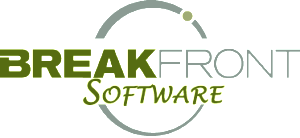
After the War
As part of Japan’s reconstruction efforts after the war, Deming trained hundreds of engineers, managers, and scholars in statistical process control (SPC) and concepts of quality. Several Japanese manufacturers who applied his techniques experienced unheard-of levels of quality and productivity. The improved quality combined with the lowered cost created new international demand for Japanese products.
In one memorable example, Ford Motor Company was simultaneously manufacturing a car model with transmissions made in Japan and the United States. Soon after the car model was on the market, Ford customers were requesting the model with Japanese transmission over the USA-made transmission, and they were willing to wait for the Japanese model.
Thanks for the History Lesson, So What?
Deming uncovered 14 key principles that he would later write about in a book that was credited with launching the Total Quality Management movement (TQM). Another buzzword you might be familiar with is Six Sigma (to grossly over-simplify, think of Six Sigma as TQM on steroids).
One of his 14 key principles is this: Cease dependence on inspection to achieve quality. Eliminate the need for massive inspection by building quality into the product in the first place.
Let’s relate this to selling kitchens. It should be your goal to achieve quality through the selling and ordering process so that you don’t make mistakes (this will keep your customers happy and the referrals coming in).
How Do You Do This?
Well, how most kitchen and bath industry businesses do this is in direct conflict with Deming’s ideas. They hire a bunch of customer service people and have them double and triple check paperwork. The more they grow, the more they hire. Why? Because there’s this age old myth in our industry that having employees double check someone else’s work (visual inspection) catches most of the errors. But as early as 1947, Deming had already proven that this concept is seriously flawed.
He taught Japan how to isolate inputs into a process to achieve desired outputs. He didn’t teach Japanese engineers to visually inspect the outputs with a bunch of people running around with their heads cut off trying to catch as many errors as they could. That’s already a proven method for failure — some errors will always slip through.
Before 2008, no one really cared. After all, anyone can run a business when the “going’s good.” But after 2008, these mistakes sting like crazy and can even put your dealership out of business. You don’t want any mistakes on quotes, orders, schedules, etc. Even one mistake in this industry can turn a job unprofitable in seconds. And it doesn’t take too many of these mishaps before you’re crying the blues.
Yet time and time again we see companies apply a pre-World War II approach to tackling mistakes in our industry.
What Should You Do?
It’s easy. Isolate your inputs. Identify why the mistakes are happening in the first place. If you’re answer is “because we re-key this stuff manually” then don’t do that anymore. Automate it. It’s really not that difficult.
The most difficult part, however, might be admitting that your current management philosophy was one of the reasons Ford Motor Company almost went out of business after the war, or that assigning employees to double/triple check work for accuracy still hasn’t worked effectively for almost 65 years now.
Change isn’t really that difficult when you finally come to grips with the fact that to survive (and thrive), you just have to operate differently.

